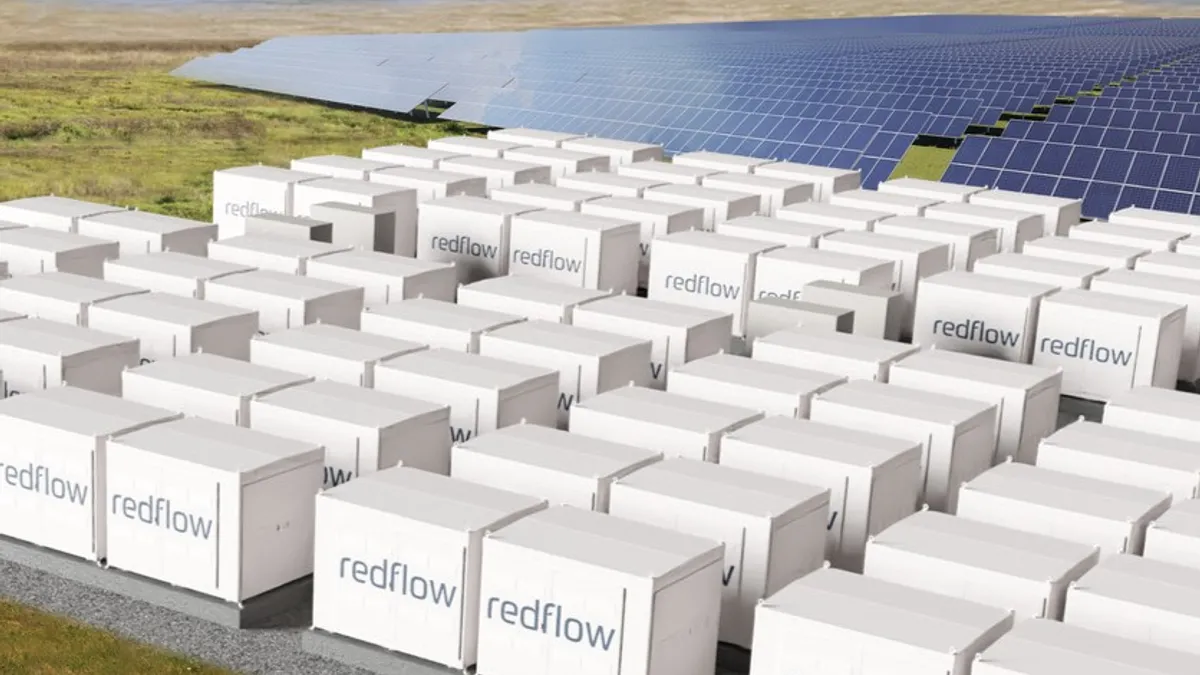Dive Brief:
- Redflow Limited, a manufacturer of zinc-bromine flow batteries, announced Thursday the California Energy Commission, CEC, has funded and approved a 5-MW solar and 20-MWh storage project.
- The Brisbane, Australia company says its largest single sale and deployment of batteries will provide power for the Paskenta Band of Nomlaki Indians in Northern California.
- The project will be funded by the CEC’s $140 million long-duration energy storage grant program seeking to scale commercially proven non-lithium energy storage technology. The $32.8 million award for the microgrid project includes $11.9 million for Redflow, according to a CEC memo.
Dive Insight:
The project will be one of the largest zinc-based battery projects, Redflow said. The battery system is designed to charge from solar and discharge throughout the remainder of the day, reducing grid demand and boosting the energy security of the Paskenta Rancheria, said Tim Harris, Redflow’s CEO and managing director.
The projects represent a key step to help achieve an estimated 45 GW to 55 GW of long-duration energy storage required in California by 2045 to support grid reliability and the state’s clean energy transition targets, Redflow said.
The company last year installed a 2-MWh system in California for Anaergia, a firm that uses waste to make renewable fuel, clean water and organic fertilizers. The system has operated for more than a year, Redflow said.
“The market for long-duration energy storage is accelerating,” Harris said. “CEC approval firmly establishes our presence in California, which is leading the development and support of non-lithium technologies to achieve its net-zero goals.”
Redflow will supply 2,000 ZBM3 batteries in its 200 kWh modular energy pods, for delivery this year and in 2024, the company said. Redflow’s zinc-bromine flow technology can provide up to 12 hours of flexible energy capacity for commercial and utility-scale energy storage applications.
Jonah Steinbuck, director of the Energy Research and Development Division at the California Energy Commission, said the project “reflects the CEC’s goal to commercialize proven long-duration energy storage solutions and support the energy sovereignty of tribal nations such as the Paskenta Band of Nomlaki Indians.”
With emerging energy storage technologies, California will be better positioned to expand and diversify its energy storage portfolio, reduce reliance on fossil fuels and enhance the reliability and resilience of the grid, he said.
Faraday Microgrids, a California developer and contractor that has deployed CEC grant-funded microgrid projects, is the grant recipient and project lead. It has signed a definitive supply agreement with Redflow covering battery supply and technical support and expects project agreements to be formalized and a notice to commence issued to Redflow in July.














